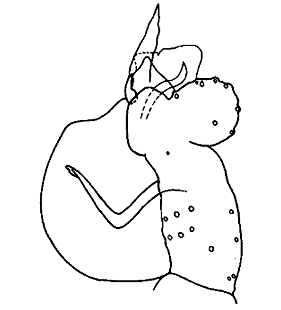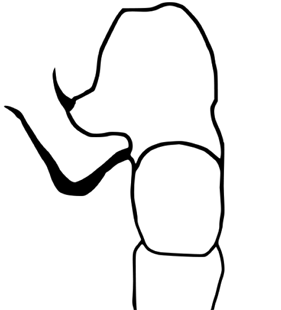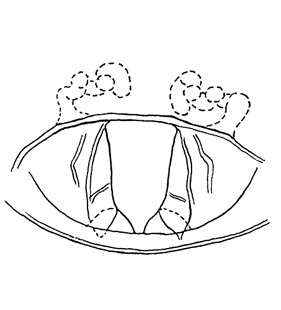Leptoneta infuscata Simon, 1872
Beschreibung
Männchen
Pedipalpus 1.2 mm lang.
Körperlänge Männchen: 2-2.5 mmWeibchen
Pedipalpus: Femur etwas länger als Tarsus, Tarsus so lang wie Tibia und Patella zusammen. Färbung variabel, Individuen im Freiland violettlich-braun, Individuen in Höhlen hell gefärbt. Augen gut entwickelt, schwarz umrandet, Hinteraugen kleiner, das 1- bis 2-fache des eigenen Durchmessers von den VSA entfernt. Beine: Bestachelung sehr variabel, Femur und Metatarsus ohne Stacheln (forma typical) oder mit Stacheln (forma iberica).
Körperlänge Weibchen: 2-2.5 mmZusätzliche Informationen
Gewöhnlich im Freiland, in Nadelwäldern, Laubwäldern oder Mischwäldern, im Moos oder unter Steinen, zudem in Höhlen.
Troglophile Art (Mammola et al., 2022)
Verbreitung
Phänologie
| Jan | Feb | Mar | Apr | May | Jun | Jul | Aug | Sep | Oct | Nov | Dec |
 |  |
Abbildungen
Verbreitungsnachweise
"No reference" bedeutet nicht, dass die Art in diesem Land nicht vorkommt, sondern dass wir die Referenz hierfür noch nicht eingefügt haben. Wir arbeiten daran.
Literatur
Branco V V, Morano E, Cardoso P (2019) An update to the Iberian spider checklist (Araneae). Zootaxa 4614: 201-254 ![]()
Déjean S (2022c) Révision des Leptoneta du groupe infuscata (Leptonetidae, Araneae) dans les Pyrénées et sur le versant Sud de la Montagne Noire (Occitanie, France) avec description de Leptoneta albera sp. nov. Revue Arachnologique (2) 9: 13-25 ![]()
Déjean S, Danflous S, Oger P (2019) Le genre Leptoneta (Araneae, Leptonetidae) dans les Hautes-Pyrénées (France). Revue Arachnologique (2) 6: 2-9 ![]()
Dresco E (1986) Etude des Leptoneta. Leptoneta corsica Fage (Araneae, Leptonetidae). Bulletin de la Société d'Histoire Naturelle de Toulouse 122: 35-39 ![]()
Duffey E, Brignoli P M (1981) Two rare spiders from the Spanish Pyrenees (prov. Huesca). Bulletin of the British Arachnological Society 5: 155-158 ![]()
Le Peru B (2011) The spiders of Europe, a synthesis of data: Volume 1 Atypidae to Theridiidae. Mémoires de la Société Linnéenne de Lyon 2: 1-522 ![]()
Mammola S, Pavlek M, Huber B A, Ballarin F, Tolve M, Čupić I, Hesselberg T, Lunghi E, Mouron S, Graco-Roza C, Cardoso P (2022) A trait database and updated checklist for European subterranean spiders. Scientific Data 9(236): 1-13 ![]()
Simon E (1914) Les arachnides de France 6 (1). Paris (Roret): 1-308 ![]()
WSC (2024) World Spider Catalog. Version 25.0. Natural History Museum Bern, online at http://wsc.nmbe.ch (22.01.2024) doi: 10.24436/2 ![]()





